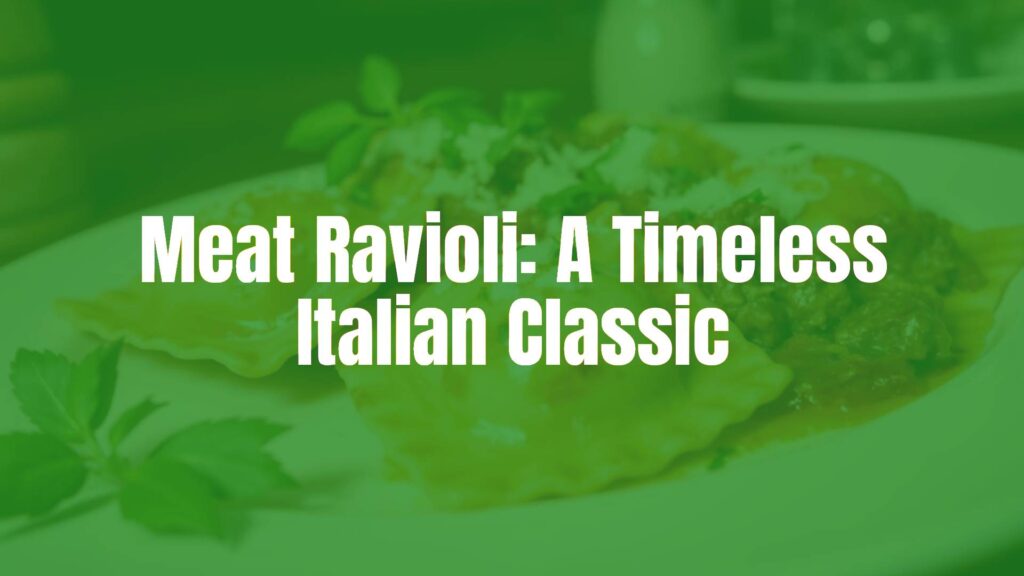Exploring the World of Meat Ravioli
Meat ravioli stand as one of the most cherished pasta dishes in Italian cuisine, marrying delicate pasta with hearty, savory fillings. Characterized by their tender pockets of dough encasing a seasoned meat mixture, meat ravioli represent a harmonious blend of texture, flavor, and culinary tradition. Whether enjoyed as a comforting family meal or as a refined course in an elegant dinner, this dish embodies both rustic charm and gastronomic sophistication.
Defining Features and Culinary Appeal
At its core, meat ravioli are composed of thinly rolled pasta sheets enveloping a filling typically made from a combination of ground meats, aromatic vegetables, breadcrumbs, and cheese. The pasta is boiled until tender, resulting in a supple exterior that gives way to a rich, seasoned interior. The balance of flavors—often enhanced with nutmeg, herbs, and a touch of Parmesan—creates a satisfying bite that is both substantial and nuanced.
Historical Background and Regional Origins
Ravioli trace their origins to the Middle Ages, with historical records indicating their presence in Italian gastronomy as early as the 14th century. While the exact birthplace is debated, regions such as Emilia-Romagna, Lombardy, and Tuscany have long been associated with this pasta form. Meat ravioli, in particular, gained prominence as a dish for festive occasions, symbolic of abundance and hospitality. Each region puts forth its own interpretation—some emphasizing beef or veal, others opting for pork or even game meats—underscoring Italy’s diverse culinary landscape.
Core Ingredients and Preparation Techniques
The quintessential meat ravioli filling typically includes a blend of ground beef, pork, or veal, sautéed with onions, carrots, and celery for a gentle sweetness and aromatic depth. Seasonings such as salt, pepper, nutmeg, and fresh herbs impart distinctive Italian character. Some versions incorporate eggs and grated cheese, lending creaminess and cohesion to the mix. The pasta dough is crafted from flour and eggs, carefully kneaded and rolled to the desired thinness before enveloping spoonfuls of the meat mixture. Care is taken to seal each raviolo tightly to preserve its contents during cooking.
Popular Variations and Ingredient Swaps
Across Italy, the meat ravioli takes on myriad forms. In Liguria, a mixture of beef, pork, and greens like chard is popular, while Mantua’s agnoli feature braised meat fillings and a splash of broth. For those seeking alternatives, ground turkey, chicken, or even plant-based meat substitutes provide contemporary takes on the classic. Breadcrumbs or ricotta can be added to lighten the texture, and experimenting with herbs such as sage, thyme, or marjoram allows for personalization without losing the Italian essence.
Pairings and Ideal Serving Suggestions
Meat ravioli are most often complemented by sauces that enhance, rather than overpower, their robust filling. Simple accompaniments such as brown butter with crispy sage, a light tomato passata, or a delicate meat broth are traditional and beloved. For a heartier experience, a slow-cooked ragù brings additional depth. As for beverages, a medium-bodied red wine—such as Chianti or Barbera—pairs beautifully, balancing tannins with the ravioli’s richness.
Enduring Popularity
Few Italian dishes offer the universal appeal and cultural resonance of meat ravioli. Embraced by home cooks and celebrated by chefs, their enduring popularity lies in their adaptability and comforting qualities. From festive winter feasts to everyday family lunches, meat ravioli remain a nourishing tradition—and a testament to the ingenuity of Italian culinary heritage.

